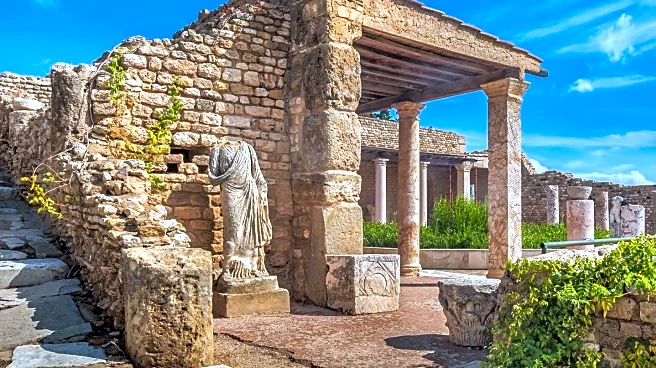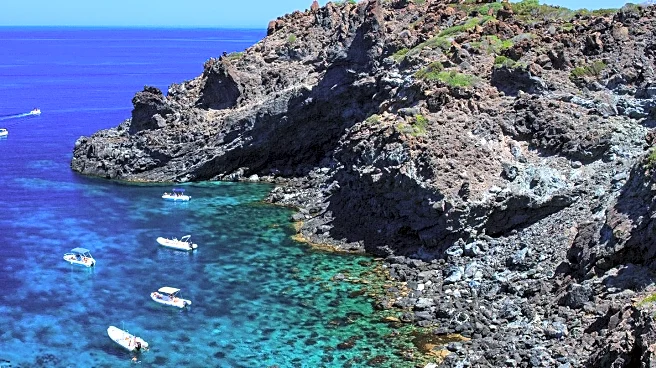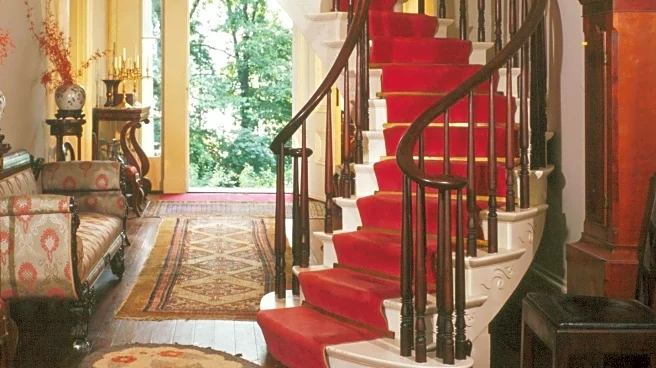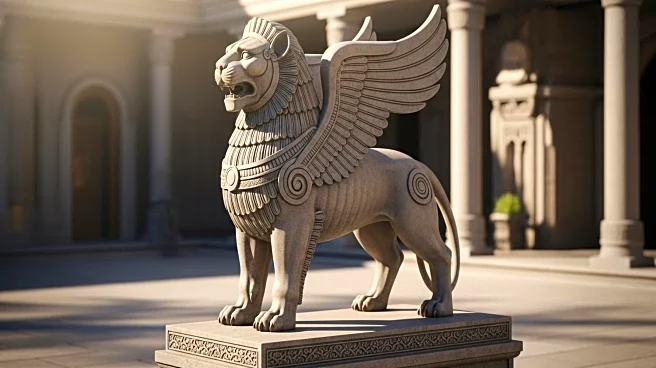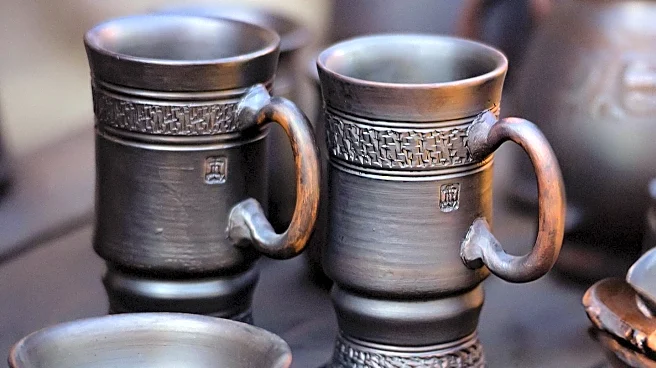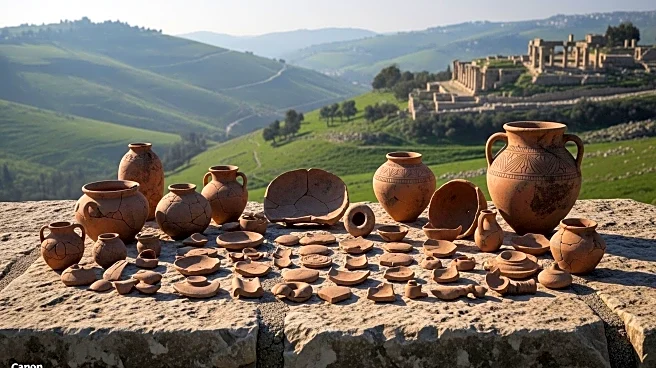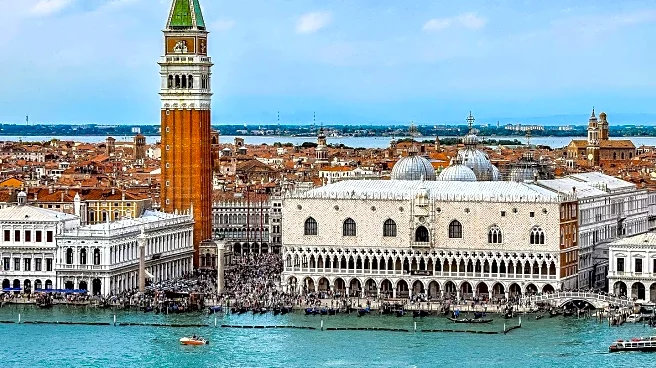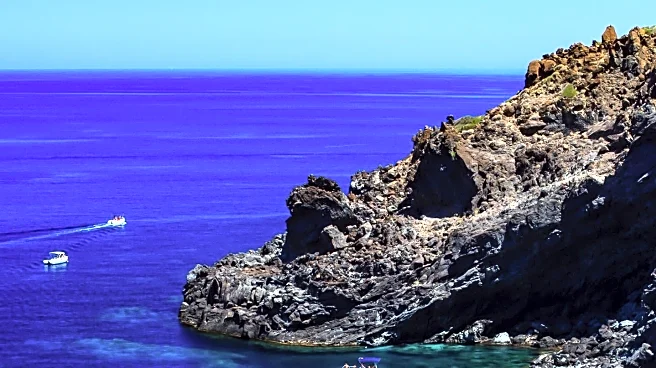What's Happening?
Archaeologists in Albania have uncovered a significant Roman burial chamber dating back to the 3rd to 4th century C.E. This discovery, made near the village of Strikcan, is the first of its kind in Albania, a region that was part of the Roman Empire for centuries. The tomb, constructed from limestone slabs with Greek inscriptions, contained artifacts such as gold-embroidered fabric, knives, and glass plates, indicating it belonged to a wealthy individual. Despite evidence of looting, the site offers valuable insights into Roman-era burial practices. Local authorities plan to develop the site into a tourist attraction, capitalizing on Albania's growing tourism industry.
Why It's Important?
The discovery of the Roman tomb is a significant archaeological find that enhances understanding of Roman influence in the Balkans. It provides a rare glimpse into the burial customs and social hierarchies of the time. For Albania, this find is not only a cultural treasure but also a potential economic boon. As the country experiences a tourism boom, with visitor numbers expected to exceed 15 million in 2025, the tomb could become a major attraction, drawing history enthusiasts and boosting local economies. The development of such sites can also foster greater appreciation and preservation of cultural heritage.
What's Next?
Researchers will continue to study the tomb and its inscriptions to uncover more about the individuals buried there and their societal roles. The site will likely undergo further archaeological exploration to ensure comprehensive documentation and preservation. As plans to develop the tomb into a tourist site progress, local authorities will need to balance accessibility with conservation efforts. The success of this project could set a precedent for similar initiatives in the region, promoting sustainable tourism and cultural preservation.
